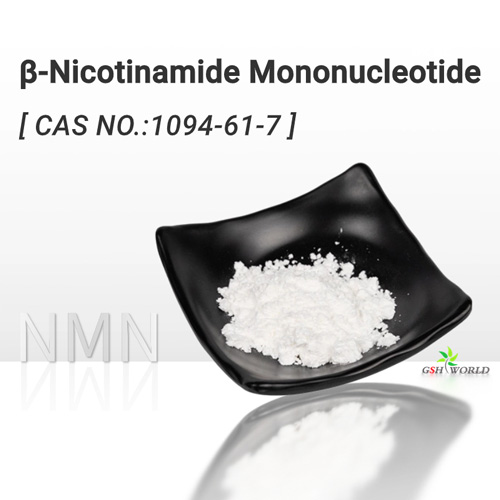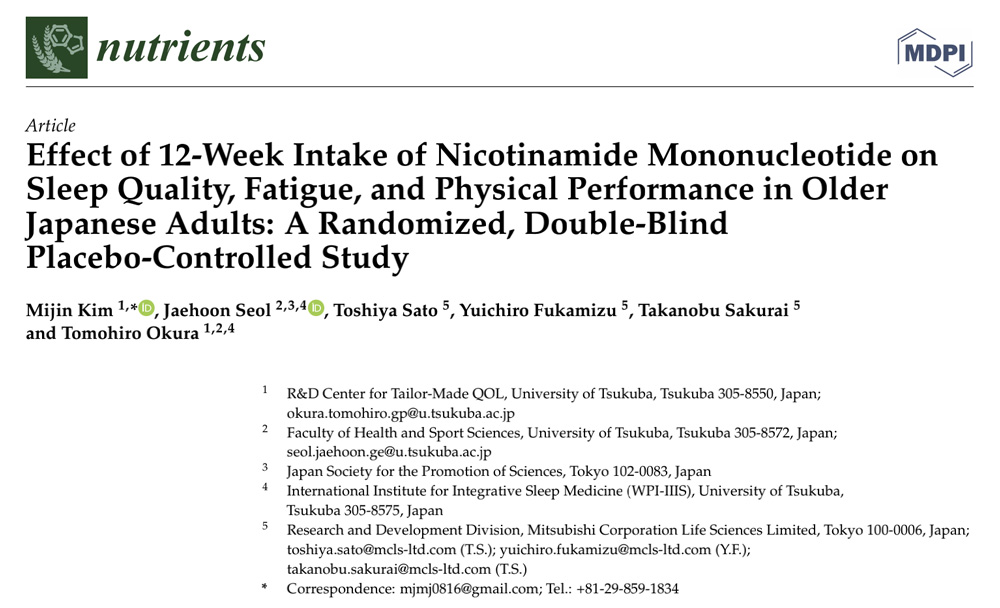On February 11, 2022, the University of Tsukuba, Japan and other institutions jointly published a randomized, double-blind, placebo-controlled clinical study of NMN on sleep quality, fatigue, and physical performance in older adults.
The study involved 108 elderly Japanese adults, divided into NMN group and placebo group, who were given 250 mg of NMN every afternoon for 12 weeks.

The results showed that the elderly who took NMN showed significant effects in improving lower limb function, reducing drowsiness and improving sleep quality compared to the placebo group.
This study suggests that NMN has potential clinical applications in preventing physical loss and improving fatigue in the elderly.

NMN sleep improvement
As assessed by the Pittsburgh Sleep Quality Index PSQI, there was no statistically significant interaction with sleep quality. However, there were significant main effects on sleep duration, sleep disorder score, daytime dysfunction score, sleep quality score and PSQI overall score (p<0.01).
The effect sizes of sleep latency (d=0.56), daytime dysfunction score (d=0.72), sleep quality score (d=0.80) and PSQI overall score (d=0.68) in NMN_PM group were the largest among the four groups.

NMN fatigue improvement
The interaction between fatigue and sleepiness was significant (p=0.02). According to post-analysis, the improvement of sleepiness in the middle and post sleepiness groups of NMN_PM group and Placebo_PM group was more significant than that in Pre group.
Sleepiness (p<0.01), instability (p<0.01), delayed sleepiness (p=0.03) and total fatigue score (p<0.01) had significant effects on time.
The NMN_PM group had a moderate narcolepsy effect size (d=0.64), and was the largest in all groups.

Physical improvement of NMN
Participants’ physical performance assessed by grip strength, five sit-stops (5-STS), timed starts (TUG), and a 5-meter habitual walk. Significant interactions observed in 5-STS (p=0.04).
Post-analysis showed significant improvement in 5-STS in all groups compared to Pre. A significant main effect of time observed in 5-STS(p<0.01) and TUG(p<0.01).
The main effect of 5-STS was significant (p=0.05). In addition, the effect size of 5-STS the largest in the NMN_PM group compared with the other three groups (d=0.72). The effect size of NMN_PM group in TUG was medium (d=0.54), which was the largest in all groups.





